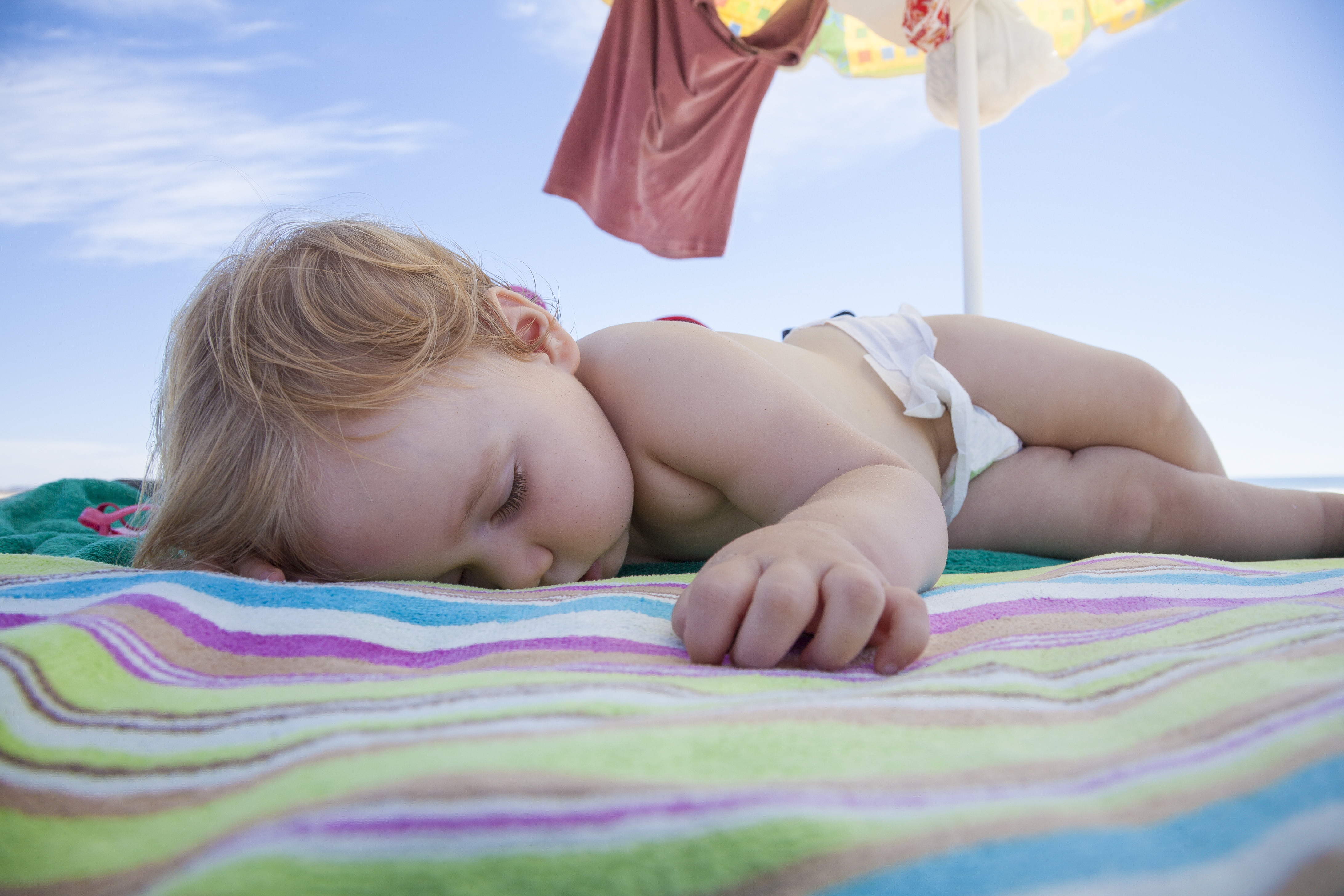
Babies can suffer several medical problems if they have too much sun, including:
SunburnIf your baby has been in the sun and shows any of the following symptoms, you should take your baby immediately to ER or A&E:
Fever or high temperature
Your baby should never get sunburnt and sunbathing is not appropriate for the young delicate skin.
Nearly ALL the risk of adult skin cancers arise from sunburn when those adults were young children.
In general:
The risk of heatstroke is much higher for babies than adults.
This is because:
On hot days, make sure your baby isn’t wearing too many clothes, that they stay in the shade, and has plenty of fluid or water to drink (lots of breastfeeds should be offered in this weather if the baby is breastfed and make sure you keep yourself hydrated too).
In hot and sunny weather do:
In hot and sunny weather don’t:
Heatstroke is potentially fatal for babies and you should take your baby immediately to A&E if they after the above conditions they have:
Prickly heat
The symptoms of prickly heat (or milisria), include an itchy rash of small, red and raised spots that feel prickly, itchy or stinging. The rash can appear anywhere but it commonly occurs on your child’s face, upper torso, and thighs.
In adults, prickly heat usually occurs when we overheat and sweat. In babies, they can’t sweat properly yet so the glands become blocked and the sweat gets trapped under the skin.
Take your baby immediately to a cool place.
Watch for any of the symptoms of heatstroke as well.
Soothe prickly heat with calamine lotion and speak to your child’s doctor or pharmacist about using a hydrocortisone cream if the rash is sore and itchy.
When is the sun hottest?
As the saying goes,
Only mad dogs and Englishmen go out in the midday sun.
Bear in mind these facts about the sun:

High SPF, preferably 30-50 UVB and UVA rays screened out, look for this on the package. Ask your pharmacist for advice. If your baby has any allergies or is prone to eczema or asthma, they will be at increased risk of allergies to sunscreens. Always test out a tiny patch of skin first and see if there’s any reaction. Choose PABA-free, fragrance-free, colouring free, sunscreens for sensitive skins. For playing in the water, waterproof sunscreen is the best, followed by water-resistant. Look carefully at how often you need to reapply.
It’s really important that your baby gets enough Vitamin D between October and March (in the northern hemisphere) if you live in a temperate country as it’s not possible to get enough Vitamin D from the sun during these months. During the summer months, only a short amount of safe sun exposure is required to manufacture vital Vitamin D in your skin.
Here is a statement on Vitamin D from several UK research and charitable groups:
Vitamin D is essential for good bone health and for most people sunlight is the most important source of Vitamin D. The time required to make sufficient Vitamin D varies according to a number of environmental, physical and personal factors, but is typically short and less than the amount of time needed for skin to redden and burn. Enjoying the sun safely, while taking care not to burn, can help to provide the benefits of Vitamin D without unduly raising the risk of skin cancer. Vitamin D supplements and specific foods can help to maintain sufficient levels of Vitamin D, particularly in people at risk of deficiency.